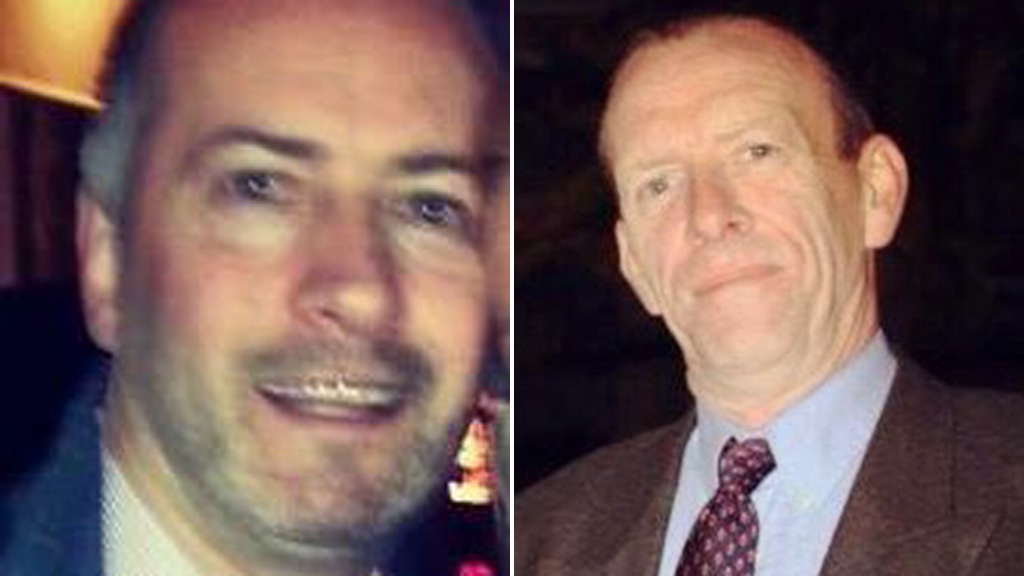Glasgow helicopter crash: no more bodies found
The police helicopter which crashed into the roof of a Glasgow pub killing nine, did not make a mayday call, investigators confirm, adding no more bodies have been found beneath the wreckage.
Deputy Chief Constable Rose Fitzpatrick said: “I can confirm that the search and recovery operation has now concluded and we are satisfied there are no further fatalities at the scene. In total, nine people died as a result of the incident.”
The Eurocopter 125 T2 was carefully winched from the roof of the Clutha Vaults this morning, allowing investigators to begin the process of examining data and material from the aircraft as they begin to piece together what happened.
Fire and rescue services and the police are continuing to search the wreckage. A ninth body was recovered from the destroyed building in the early hours of Monday morning; while rescuers are hopeful that all fatalities have been found, they are refusing to rule out the possibility of further bodies remaining in the rubble.
David Miller, deputy chief inspector of the Air Accidents Investigation Branch (AAIB), said that the helicopter made a vertical descent into the Clutha bar and the pilot made no mayday call
“I can confirm that the helicopter does not have a flight data recorder, however it does have a significant number of modern electronic systems on board and it may be possible to recover recorded data from those systems.
“There were no emergency transmissions from the pilot before this accident.”
Lewis Ramsay, assistant chief officer with the Scottish Fire and Rescue Service who was one of the first firefighters on the scene, told Channel 4 News: "It was very chaotic. Very chaotic indeed. It was a really unsafe building. We had to get crews in there regardless. There was a very difficult collapse of the roof structure, and the helicopter was resting in the middle of the pub. It was very dark, very dusty. We were very unsure of our footing and our environment. One of our priorities was to try and bring a bit of order and safety to that environment so the casualties were given the best possible chance. A lot of firefighters were taking big risks with their own safety. But it was a desperate operation to get people out, and one that required a great deal of dignity, in terms of those who there was a declaration that their life had passed."
Aviation experts have said that the investigation will consider whether fuel contamination, a problem with the fuel supply, or a mechanical fault was behind the accident, as it is almost unheard of for both engines of a twin-engine aircraft to fail simultaneously. Witnesses described seeing the helicopter drop out of the sky “like a stone”.
Mr Miller added that nothing had detached from the craft in flight before the accident.
A total of 32 people were taken to hospitals across Glasgow, and 12 patients remain there.
The crash on Friday night claimed the lives of the pilot of the aircraft – David Traill, 51 – and two crew members, police officers Kirsty Nelis, 36, and Tony Collins, 43.
Gary Arthur, 48, of Paisley (below, left), and Samuel McGhee, 56, from Glasgow (below right), were also named as two victims inside the pub.

RIP dad ð?? you’ll always mean the world to me, I promise to do you proud, I love you with all my heart â¤ï¸ð???
— chloe arthur (@chloearthurx) November 30, 2013
Two others reportedly killed in the crash are John McGarrigle, 59, and Mark O’Prey, 44.
The three-tonne Eurocopter’s rotor blades and part of the tail were removed on Sunday and the fuselage was secured and winched slowly through the roof of the building on Monday morning. Specialist officers stood on either side of the aircraft as it was raised inch by inch by a crane.
The wreckage will be taken to the AAIB base in Farnborough, Hampshire, for further investigation.
Mr Miller described the recovery operation as “hazardous and very, very challenging”. He added: “We have the recorded radar data, so we know the track of the helicopter. That also tells us the height and speed of the helicopter in the latter stages of its flight.
“We have recorded radio information and transmissions.
“As far as the helicopter is concerned the systems do hold microchips that hold non-volatile memory in them and it may be possible to download that information from things such as the full authority digital electronic control systems that manage the engines.
“I can confirm that nothing detached from the helicopter in flight before the accident and that all four rotor blades were attached to the rotor head after the impact.
“I can also confirm that there’s no cause to connect this accident with any previous accidents to helicopters operating in the North Sea environment.”

Members of the emergency services and rescue workers formed a guard of honour (above) for ambulances removing bodies from the Clutha.
Police Scotland has begun examining footage collected by eyewitnesses as part of their investigations into the crash, but has requested that anyone with information gets in touch.
Alistair Carmichael, the Scottish Secretary, described the city’s response to the tragedy as “a very thin silver lining in a very dark cloud”. Speaking after visiting emergency services at the command centre at the site of the accident, in Stockwell Street, he signed a book of condolence which has been set up in the council’s headquarters.
Members of the public have been queuing up to sign the book.
-
Latest news
-
‘I violated my moral compass working for Trump,’ former lawyer testifies3m

-
Working class creatives in film and TV at lowest level in decade5m

-
Israeli police investigating attack on Gaza aid convoy4m

-
Biden announces major tariff increase on Chinese-imported green tech3m

-
‘If NHS can afford it, people with obesity should have Semaglutide,’ says weight loss expert5m

-




